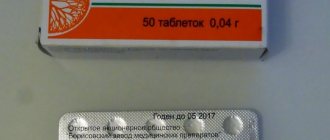Where is
The withers are the part of the animal's body located behind its head, where the neck ends and the back begins. It is this place that the common people call “shkirka”. If you want to know exactly where a cat's withers are, look at how these animals carry their babies. Pets always do this the same way. The place where a mother grabs her kittens with her teeth is the withers. Holds the cat by the scruff of the neck during mating.
Physiology
To understand whether or not you can pick up a cat by the scruff of the neck, you need to understand their physiology. Mother cats often carry their kittens by the scruff of the neck. Small, at this moment they resemble a funny fluffy toy, and not a real animal. But a person is not a mother cat. People think that if a cat can do it, then so can they, but this is not true. Firstly, the cat does this very carefully and not often. Secondly, she is carrying a small kitten, not an adult animal.
Kittens have softer, more elastic, pliable skin and muscles that have not yet fully developed. That is why the kitten does not hurt when it is carried. But as a cat grows, its skin becomes less elastic and rougher. The weight of the animal increases and therefore it is often impossible to pick up an already adult cat by the scruff of the neck.
- This is a lot of stress on the skin, which can stretch too much if this is done from an early age of the animal. In some cases of particularly clumsy lifting, tears may appear in the skin.
- The muscles of an adult cat are already well formed. The animal may begin to wriggle out and cause harm to itself. But even if the cat does not wriggle out, such an action can pull his neck muscles.
- Due to the significant weight of the cat, the skin can press on his throat, and he will begin to choke. And this will lead to panic in the animal and aggressive actions. This happens rarely, but it is also possible.
- In rare cases, if you sharply pull a cat by the scruff of the neck, it is possible that the spine may be damaged.
Structure
So, we found out what the withers are and where they are located in a cat. How does this part of the animal’s body work? The bone base of the withers is formed by the first 5 thoracic vertebrae. They have spinous processes that give shape to this part of the body. The skin in this area of the animal is very thin and elastic. That is why kittens do not experience any pain at the moment when the mother takes them by the scruff of the neck with her teeth. The spinous processes of the vertebrae have different heights. Due to this, the animal’s withers have a slightly arched shape.
Under the skin in this place there is fatty tissue. Next come the muscles (semispinalis, rhomboid, trapezius, etc.). The joints at the withers are found only in the spine itself. A cat's shoulder blades are attached to the body solely with the help of muscles and tendons. This determines the animal’s extraordinary flexibility and its ability to make almost lightning-fast jumps.
Due to the special method of attaching the forelimbs, it is not advisable to pick up a cat by them and lift him up by weight. The animal experiences severe discomfort. It is much more correct to hold your pet behind the shoulder blades in the chest area when lifting.
A cat's withers, where the skin is not too sensitive, is still a relatively problematic place. After all, next to it is the animal’s neck. Any serious injury to this part of the body can lead to health problems for the pet or even its death. Therefore, in case of damage to the withers, owners should take their pet to the veterinarian as soon as possible.
Symptoms
One of the main signs of lichen is spots without fur.
There are a number of common symptoms for all types of lichen in cats:
- hair loss;
- peeling and inflammation of the skin;
- change in pigmentation;
- inflammation;
- severe itching.
Symptoms of ringworm
With ringworm, a cat loses certain areas of its fur. But the disease begins with a barely noticeable small rash under the fur. Signs that should alert the owner are increased anxiety of the animal and frequent scratching. The development of ringworm in cats is characterized by the following:
- round flaky spots appear on the skin, crusts form;
- the fur in the areas where the rash appears thins, the hairs become brittle;
- smooth, reddened skin is visible under the fallen scales;
- the spots expand and take an oval shape;
- the spread of serous-purulent crusts leads to the formation of scabs;
- the areas of skin underneath are completely missing hair; after recovery, it will not be restored;
- If the cat is not treated, the spots will grow, forming extensive areas of baldness.
The spots are painful, itchy, and cats often chew and scratch them. There is also a form of ringworm in which all the described signs are either absent or clearly not expressed. This clinical picture is called atypical. Only individual hairs of the fur are affected. Ringworm is invisible, therefore, a person does not take any measures until the disease is already advanced.
Ringworm symptoms vary depending on the specific pathogen. In some cases, only the cat's head and face are affected, in others the spots spread to the entire body.
Ringworm in cats
Symptoms of versicolor (pityriasis versicolor)
Tinea versicolor initially looks like a small pale oval spot on the skin of a cat or cat. But after a few days the number of spots increases, they grow together, forming lesions of irregular shape. If the fungus gets into the claw, it becomes deformed.
Interestingly, there is practically no itching with this form of lichen. And when it gets colder, the spots may disappear on their own. The affected surface can be either smooth or scaly. Otherwise, pityriasis versicolor is practically no different from its other types.
Pityriasis versicolor in cats
Symptoms of pink (shingles)
Pityriasis rosea can appear as many small spots like an allergic rash, or it can appear as large pinkish spots up to 2 cm in diameter. Most often, lesions appear on the stomach, inner thighs, and groin of the animal. The itching may be slight or sometimes absent altogether.
In the center the spots are flaky, and at the edges the skin is smooth. In severe cases and without treatment, sepsis may occur if pathogenic microorganisms enter and take root in the lesions. Sometimes pityriasis rosea in a cat is accompanied by fever, joint pain, swollen lymph nodes, and general malaise.
Pityriasis rosea in cats
Symptoms of weeping lichen (wetting eczema)
Ringworm in cats and kittens also begins with red spots. The skin in these areas is hotter than the surrounding area and is also very painful. The rash consists of blisters filled with fluid. When these blisters rupture, their contents are released, causing skin infection and the formation of ulcers and crusts. Sometimes shingles is accompanied by a fever. This type of disease is not dangerous for people.
Lichen planus
Advantage of drops
Until recently, fleas could only be removed from a cat using various types of shampoos. Today, pet stores sell all kinds of sprays against parasites, as well as drops in capsules. When using the latter, the medicine is usually applied precisely to the withers of the animal. This method guarantees that the cat will not lick the drug, get it with its paw and get poisoned. It’s clear where the cat’s withers are. Essentially, this is the highest point of the back. Therefore, after application, the medicine is distributed relatively evenly by gravity over the animal’s back and sides, which ensures the best effect. Of course, for the drug to be as effective as possible, it must be used correctly.
Precautionary measures
Flea drops, like other specialized medications, are not toxic to your pet
Despite this, when using them, precautions must be taken so as not to harm the animal. These include:
- Before using the drops, inspect the skin where they are applied. If there are open wounds, scratches or other damage on it, then the drug cannot be applied;
- It is forbidden to handle kittens that feed on their mother's milk. The cat constantly licks her babies. At the same time, she will definitely lick off the drops applied to them. This may provoke negative consequences for her health;
- The kitten is allowed to use only specialized medications. Products for adults are not recommended for use;
- The drops used should not get on the cat's nose, eyes or mouth. If this happens, they should be washed off immediately with plenty of running water. After this, it is best to show the animal to a veterinarian;
- In some cases, drugs can cause an allergic reaction. If this happens, consult your veterinarian;
- Be careful not to lick the product off, especially if it is applied in multiple places along the spine. If this happens, observe your pet's behavior. At the first symptoms of poisoning, seek help from a specialist.
Compliance with such precautions will allow you not to worry about the health of the animal during treatment. Don't neglect them
Preparing for treatment
Thus, now the reader knows where the cat’s withers are. How to find it if you need to use medication is a simple question. However, when using the drops themselves, several important rules should be followed. Firstly, the cat should not be bathed for 2-3 days before using the medicine and for 2-3 days after that. Secondly, before using the drops, the animal’s withers must be carefully examined. If there are large lesions and wounds on it, it is better not to use the medicine. If the circumstances are unsuccessful in this case, the insecticide may enter the animal’s bloodstream, which will lead to poisoning.
When performing the procedure for applying the drug, the cat should be gently held behind its back with your left hand. You should not administer medicine to an animal that is worried about something, has become playful or is angry. The cat may jerk during the procedure to escape, and the drops will fall too low on the body. As a result, the animal will subsequently be able to reach them. Wait until your pet calms down.
Post-vaccination sarcoma in cats: causes, treatment, prevention
Thus, now the reader knows where the cat’s withers are. How to find it if you need to use medicine is a simple question. However, when using the drops themselves, several important rules should be followed. Firstly, the cat should not be bathed for 2-3 days before using the medicine and for 2-3 days after that.
When performing the procedure for applying the drug, the cat should be gently held behind its back with your left hand. You should not administer medicine to an animal that is worried about something, has become playful or is angry. The cat may jerk during the procedure to escape, and the drops will fall too low on the body. As a result, the animal will subsequently be able to reach them. Wait until your pet calms down.
The causes of malignant tumors are not yet known with certainty, only predisposing factors. However, an aggressive tumor is registered in cats, which is not without reason called “post-vaccination sarcoma”.
It often appears at the site of vaccination or other injections and is very dangerous.
Causes
The appearance of fibrosarcoma in cats is associated with an inflammatory tissue reaction to the injection.
As numerous studies have proven, a tumor is not necessarily caused by vaccination; any locally irritating substances (antibiotics, hormones) are dangerous.
Therefore, the correct international name is post-injection sarcoma. This term does not create fear of mandatory vaccination and a negative attitude towards pharmacists.
The tumor is called vaccine-associated sarcoma (VAS) because it begins to grow after the use of vaccines containing aluminum hydroxide as an adjuvant. In cats it is:
- mainly rabies vaccine;
- less often - from leukemia.
Inflammation at the site of vaccination occurs in almost all animals; this is an immune response to foreign invasion. But it develops into an oncological process only in 1 case out of several thousand.
There is a hypothesis about the genetic predisposition of cats to fibrosarcoma, which is confirmed by its occurrence at different stages of life in animals from the same litter.
Post-vaccination sarcoma is a very characteristic tumor that an experienced veterinarian should suspect without additional research after examination.
- The fact of vaccination or other injections is that a tumor can appear both several months and several years after vaccination.
- It is located in the place where the injection was made (most often - the withers, between the shoulder blades, less often - the thigh).
- Post-vaccination sarcoma does not occur in very young or old individuals; its average age is from 6 to 11 years.
- The tumor is dense, painless on palpation, with clear boundaries.
- Sudden rapid growth.
Often, owners are aware of the presence of a tiny, dense nodule on a cat's withers, but are unaware of the need to see a doctor.
Then this formation begins to grow so quickly that the veterinarian already sees a huge mass that rises above the shoulder blades, like a hump.
Along with the size of the tumor, the volume of surgical intervention increases and the prognosis worsens. Sarcoma reaches a diameter of several centimeters in just a few weeks.
Cytology (the study of tumor cells under a microscope) is used to confirm the diagnosis. The material is taken without anesthesia using a regular syringe. If you need to clarify the size of the tumor and its location, a computed tomography or x-ray is done. The pictures show whether the bones (spine, shoulder blades) are involved in the tumor process.
Before starting treatment, you will need studies of the whole body:
- ECHO of the heart;
- X-rays of light;
- Ultrasound of the abdominal cavity;
- clinical and biochemical blood tests;
- as well as other tests that the attending physician deems necessary.
Treatment
If the tumor is detected at an early stage, treatment may be successful. The main method of combating such a tumor is radical surgery. This term means that in addition to the tumor itself, the doctor must remove:
- 3-5 cm of visually healthy tissue around;
- and at least one muscular fascia in the space under the tumor.
Even if the tumor is small, the scope of the operation with this approach is impressive. If the sarcoma is already the size of a fist or more, the intervention becomes frighteningly traumatic. Often the surgeon is forced to remove part or all of the scapula and saw the spinous processes of the thoracic vertebrae. Sometimes an animal loses a limb.
The veterinarian must convince the owners of the need for a radical operation, and master the basics of reconstructive surgery - plastic surgery - in order to close the huge defect after tumor removal.
This uncompromising approach is due to the fact that post-vaccination sarcoma recurs - it produces repeated, even more aggressive growth at the site of removal.
But the average lifespan of cats after a diagnosis of post-injection sarcoma is only 2-3 years.
- The best results are obtained by a combination of surgery and radiation therapy, but only a few veterinary clinics have such capabilities.
- Chemotherapy is used less often - mainly to reduce the size of the tumor before surgery.
Prevention
Sometimes, when faced with post-vaccination sarcoma in cats, owners subsequently refuse to vaccinate their pets at all. This is a fundamentally wrong approach, because the animal can die from a viral infection. There are a number of recommendations that can minimize the risk of vaccine-associated tumors.
We suggest you familiarize yourself with: Pig lungs, structure of lung disease
Vaccine selection
The latest generation of drugs practically do not cause irritation at the injection site.
- There is a rabies vaccine that does not contain aluminum hydroxide, that very dangerous adjuvant. This is Purevax Feline Rabies from the French company Merial.
- Unfortunately, not all clinics have it in stock; cats are more often vaccinated with the usual Rabisin. Owners have to look for the drug themselves.
Injection site
If complications from the vaccine are expected, the injection site should be chosen taking into account possible surgical intervention.
- Injections into the tail are suggested, but this is too painful and is therefore not practiced.
- You can inject just below the knee subcutaneously, or intramuscularly into the thigh.
- Even in the case of the traditional injection of the vaccine into the withers area, this can be done not directly above the spine, but by stepping back to the right or left, above the shoulder blade or ribs.
After vaccination, owners must independently monitor whether their pet is okay. When examining the vaccination site, pay attention to the presence and size of the compaction.
- The swelling should completely disappear after 1-2 months; if it persists longer, an examination by a veterinarian is necessary.
- If the tumor is more than 2 cm in diameter or is increasing, then the visit should not be delayed. Time is of the essence in the case of fibrosarcoma.
Fewer injections
Clinicians should avoid administering drugs by injection to cats if alternatives are available.
- The antibiotic Sinulox is available in the form of subcutaneous injections and in the form of tablets.
- The same is true for methylprednisolone and hundreds of other drugs.
Owners should try giving their cat the medication by mouth before choosing an injectable form.
Conclusion
Post-vaccination sarcoma is one of the most terrible cat diseases. It can only be dealt with in the early stages, so cat owners should not neglect preventive examinations by a veterinarian.
When scheduling vaccinations, it is better to choose vaccines without adjuvants and then observe the injection site. If you suspect sarcoma, you should consult an oncologist in a modern veterinary center.
This is the only way to ensure adequate surgical intervention, pain relief in the postoperative period, and, if necessary, radiation therapy.
How to apply flea drops onto the withers correctly for cats
The instructions for applying the drops are simple. In order to do everything correctly:
- put on medical rubber gloves;
- feel where the cat’s withers are;
- spread the fur on the animal’s neck closer to the base of the skull;
- completely squeeze the product out of the capsule onto the skin in the area of the highest spinous process;
- lightly rub the drops so that they do not flow to the side.
After using the drug, as already mentioned, it is not recommended to bathe the animal for several days. You should also not brush your cat. And, of course, you should not stroke your pet’s head or back for a couple of days. Otherwise, the medicine may get on your hands and subsequently cause poisoning in the owner. Some types of flea medications can also irritate human skin.
What is withers? Convenient place for injections
A very common medical procedure for treating animals is subcutaneous injections. Such injections are less painful than intramuscular ones and provide a high speed of action of the drugs. For cats, subcutaneous injections are given precisely in the area of the withers. After all, here the animal’s skin is thinnest and most elastic. In addition, the cat’s skin in this area is less sensitive. And therefore, your pet will not experience much pain. In addition, as a result of grabbing a cat by the scruff of the neck, its instinct of submission is activated. Therefore, the animal resists less.
How to inject into the withers correctly
It is best to inject medicine into an animal with an assistant. This procedure is carried out as follows:
- The cat is placed on its side on the table with its back to itself. The assistant must hold the animal by the hind legs and back.
- With the left hand, the skin on the withers is pulled back with a fold.
- The injection is made by pointing the needle parallel to the back.
If there is no assistant, you don’t have to place the cat on its side. In this case, it will be more convenient to place it on the floor or on the sofa. The injection is given to the animal by pressing it with the elbow of the left hand and at the same time pulling the skin with the fingers. Finding where the cat's withers are will also be easy in this case. The injection itself is done by inserting the needle no more than a third. Only a children's or insulin syringe can be used for injection.
What is the withers used for?
The owner can use the features of the withers when raising and caring for his pet.
Impact on the withers during training and education
Any cat owner should know how pressure on the withers affects their pet. If possible, this knowledge can be used for training or raising a pet, as well as suppressing aggression. As an example, we can take the development of the necessary reflexes. If the pet has performed some unnecessary action (sharpening its claws on the sofa or making a puddle in the wrong place), the following algorithm is used:
- Carefully, quite firmly, take the cat by the withers. With this gesture, the owner makes it clear that he is a strong leader. This must be done for the animal to show obedience.
- Lightly press the animal to the floor. At this time, firmly and clearly, without raising your voice, pronounce the word “impossible” or “bad.” Many owners begin to hiss instead of words, following the example of angry cats. By this, the owner brings his pet to the understanding that he is dissatisfied with his behavior or trick.
- Keep the cat in this position until the animal’s muscles begin to relax. As soon as the pet becomes soft and pliable, it can be released.
- Next, you need to praise your pet or treat it with a treat.
Do not forget that the educational moment should not cause pain in the animal (holding the withers itself does not bring discomfort).
The same method of education can be used if the cat shows aggression. From the outside it looks strange, but the method really helps. It only takes 3-5 minutes to hold the cat by the withers, and after the second or third time the animal begins to understand why its owner is dissatisfied.
Even for training purposes, you should not grab a cat by the scruff of the neck and lift it high, much less shake it in this position. This can cause injury to the animal, which will result in significant health problems.
Application of medications
A striking example of the use of the withers for medicinal purposes is such a moment as ridding an animal of fleas. For this, special drops are used. The place where they are applied to the withers is determined by the fact that the cat cannot reach here with its tongue or paw, which means it will also not be able to lick off the medicine.
Some medications are applied to the cat's withers, because from here she will not be able to lick them off
Injections
The withers are used for subcutaneous injections. These could be medications for a sick animal or vitamins. The choice of location is determined by the following circumstances:
- An injection under the skin at the withers does not cause pain, since this is an area of low sensitivity.
- The drug injected into the withers penetrates the bloodstream faster, since subcutaneous fat has a loose structure and high absorbency.
If possible, the injection into the withers should be carried out with an assistant who will hold the animal.
The withers are used as a site for subcutaneous injections
At the moment of injection, the needle should not go deeper than a third. This rule must be observed, since violation can harm the cat. If the owner is not confident in his ability to give injections, then you can use an insulin syringe, which has a small and thin needle. If this option is not suitable, then it would be useful to contact a specialist. You should not experiment with your pet's health.
Injuries in the withers area
Most often, such damage occurs in animals during mating. A cat rarely leaves wounds on a cat’s withers, but sometimes this does happen. To treat the area around the lesion, you first need to trim the fur. Next, you should rinse the wound with hydrogen peroxide. You can also use Terramycin spray or brilliant green.
Old wounds with signs of inflammation should be treated with antibiotics. This could be, for example, Misofenom ointment. It is applied to a napkin and applied to the wound. Then a bandage is applied. But, of course, it’s better not to let things get to the point of inflammation. If the damaged area is swollen and red, or there is pus coming out of it, you should immediately contact a specialist.
Interesting fact
Where the withers are located in cats, and what injuries the pet most often receives in the scruff area is therefore clear. As you can see, this place is significant for the animal’s body. Among other things, the withers also have one very interesting property. The fact that kittens calm down immediately after a cat takes them by the scruff of the neck, hang calmly and do not try to escape is well known. Why is this happening? Why do kittens hang in their mother’s teeth like lifeless “bags” in the fetal position? In fact, this behavior is primarily due to the presence of a special zone in the cat’s brain. As soon as the animal is taken by the scruff of the neck, certain impulses begin to flow from here, calming it. At the same time, the cerebellum gives the cat a signal to take a characteristic pose.
Scientists believe that such a mechanism was developed in these animals during the process of evolution. After all, a cat will not simply transfer its offspring from place to place. She acts in this way only when her children are in any danger. A screaming, attention-grabbing kitten in nature simply has a significantly reduced chance of survival.











